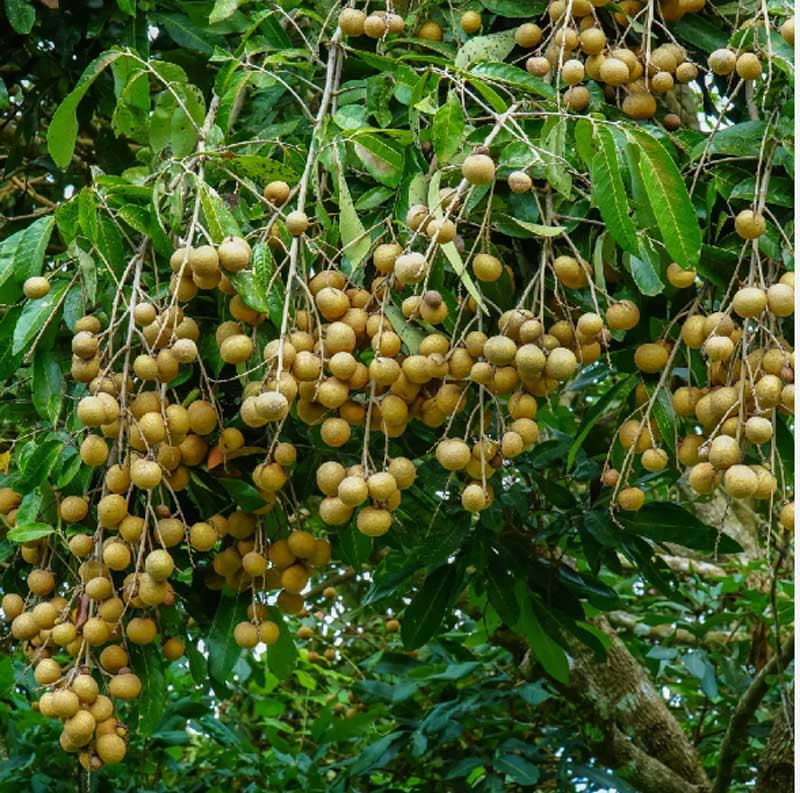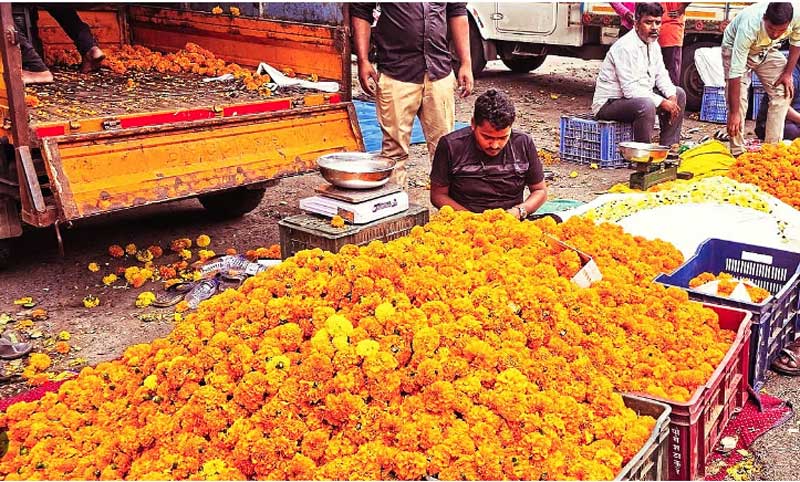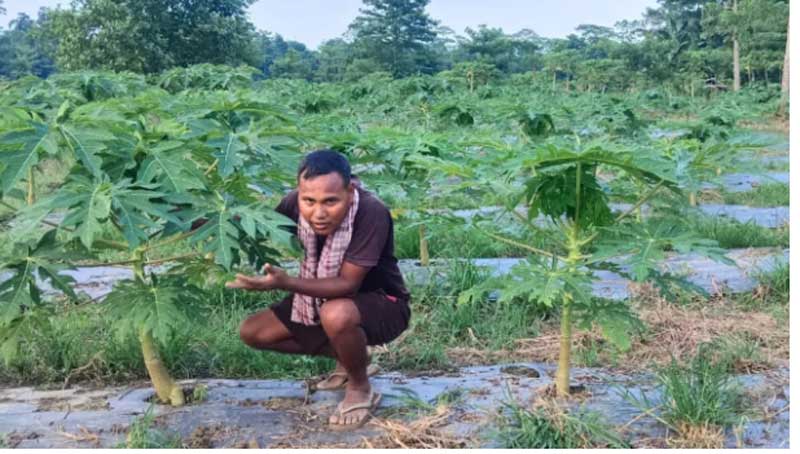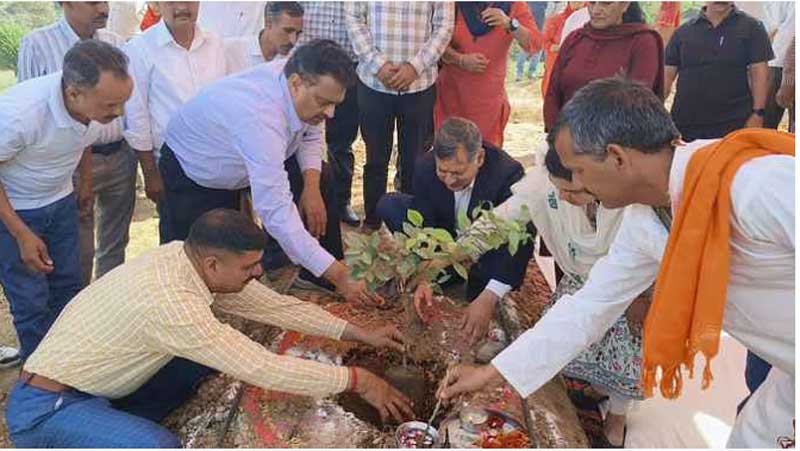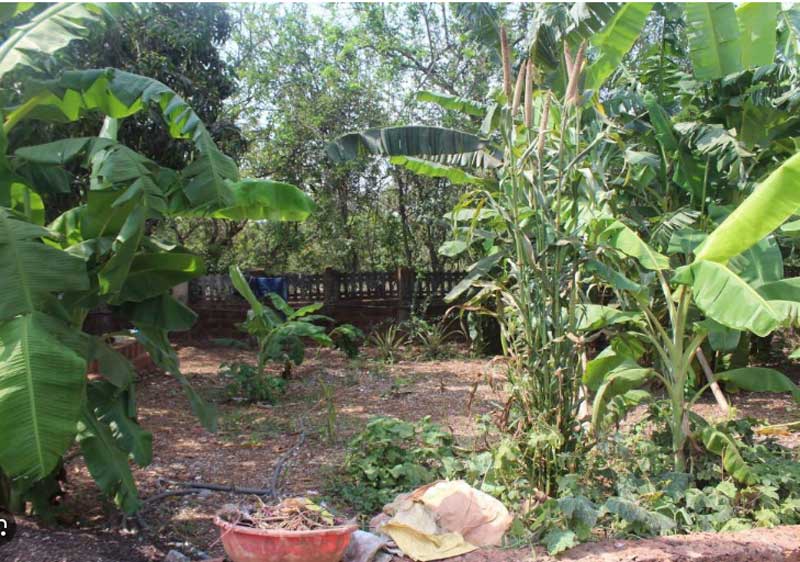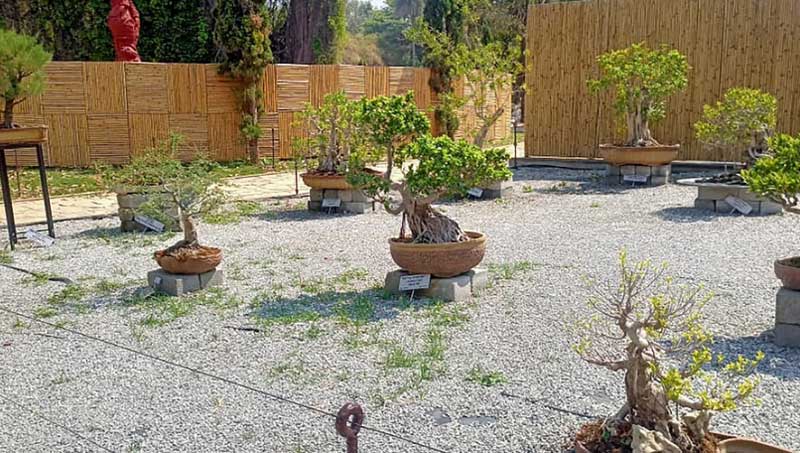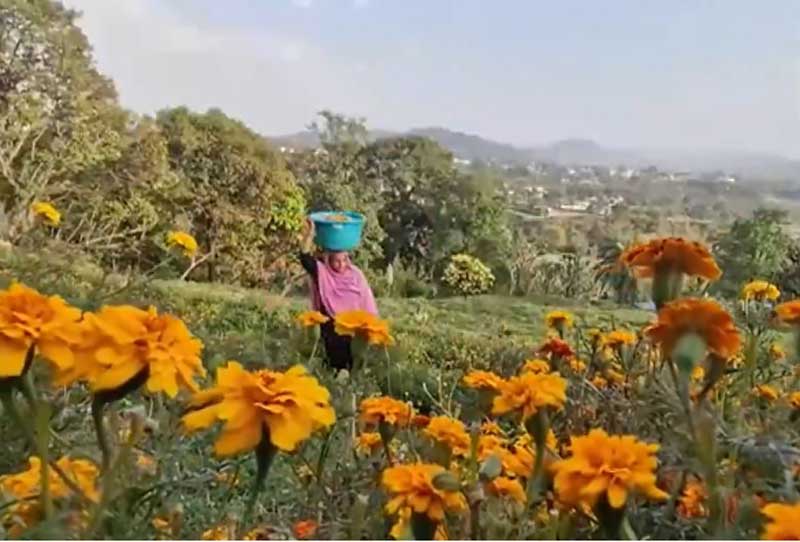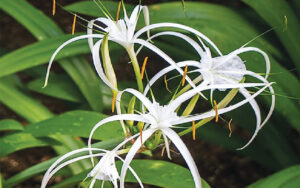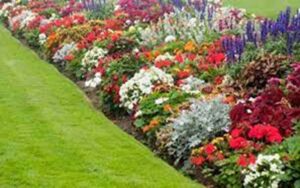Gomphrena Species – A Flower Crop for Pride and Prosperity
Amravati: Bachelor’s button is an everlasting flower crop commercially cultivated in India and is used as loose flower both as fresh flower and as dry flower. The Globe Amaranth (Gomphrena globosa L.) is native to North America, South America, Myanmar and India. Commonly known as ‘Globe Amaranth’, ‘makhmali’ (Nepali), Rakta mallika (Sanskrit), Adike huvvu / rudrakshi huvvu (Kannada) and ‘Gul-e-makhmal (Hindi), Gundi (Kashmiri). The genus belongs to the family Amaranthaceae with chromosome number 2n = 38 consists of about 100 species of half-hardy annual, biennial and herbaceous perennial plants, but only one species Gomphrena globosa with its cultivars is in general cultivation. About 18 genera and over 50 species have been reported from India. It symbolizes immortality and endless love. The flower has amazing ability to last for years when dried.
It occupies seventh position in the world dry flower market. In India, it is majorly grown in Karnataka, Tamil Nadu, Kerala and in Andhra Pradesh. Traditionally, the plant is utilized in the remedy of bronchial asthma, diarrhea, hay fever, pains, tonic, carminative, diabetes, dermatitis and piles.1-4 The flowers are rich in betacyanin which have a wide range of applications as additives and supplements in the food industry, cosmetics and livestock feed. Additionally, betacyanin has powerful antioxidant and chemo-preventive compounds.
Also Read: Quality and quantity of flowers affected by post-harvest care
Gomphrena haageana
Gomphrena haageana, also known as the Rio Grande Globe Amaranth, is a showy, tender perennial often treated as an annual.
4 Appearance: It boasts ball-shaped flowers composed of fiery orange papery bracts with tiny yellow flowers peeping from the bracts. The plant can grow up to 24-30 inches tall and 12-18 inches wide.
4 Blooming Season: It blooms from early summer to the first frost.
4 Habitat: Native to the Southern U.S. and Mexico.
4 Uses: Excellent for fresh or dried flower arrangements, and it attracts bees, butterflies, and other pollinators. It’s also drought and heat-tolerant, making it a low-maintenance addition to gardens.
4 Landscape Uses: Ideal for beds and borders, containers, cottage gardens, and cutting gardens.
Gomphrena perennis
Gomphrena perennis, also known as Perennial Globe Amaranth, is a versatile and attractive plant.
4 Appearance: It features small, pompon-shaped flowers that can be purple, pink, or white. The leaves are green and can be linear to elliptic in shape.
4 Growth: This plant can grow between 20-60 cm (8-24 inches) tall. It thrives in well-drained soil and requires full sun.
4 Blooming Season: It blooms in summer and autumn.
4 Uses: Gomphrena perennis is used as an ornamental plant, and its leaves and flowers are edible. It is also drought-tolerant and attracts pollinators.
4 Climate: It can grow in tropical, Mediterranean, subtropical, or temperate climates.
4 Landscape Uses: Ideal for beds and borders, containers, cottage gardens, and cutting gardens.
Gomphrena serrata
Gomphrena serrata, also known as Prostrate Globe Amaranth, is a low-growing perennial herb.
4 Appearance: It typically grows 2 to 6 inches tall and has hairy, lance-shaped leaves attached to sprawling stems. Flowers white with yellow tinge in axillary and terminal compressed, cylindrical spikes; utricles enclosed hardened perianth; seeds brown, shiny.6
4 Growth Habit: This plant often forms a dense mat as it roots at the lower nodes and internodes.
4 Habitat: It thrives in sandy areas, dry disturbed sites, lawns, and open woods. It has naturalized along the Atlantic and Gulf coasts of the United States.
4 Uses: While it is considered a weed in some areas, it can attract bees and butterflies. It is also known for its medicinal properties. It is containing flavonoids, volatile oil, alkaloids, tannins and phenols, saponins, steroids, Carbohydrates, acid compounds, glycoside, amino acids, and proteins.6
4 Climate: Gomphrena serrata is tolerant of humidity and salt, making it suitable for various climates.
Gomphrena celosioides
Gomphrena celosioides, also known as Prostrate Globe Amaranth or Celosia-like Globe Amaranth, is herbaceous perennial plant.
4 Appearance: This plant is much-branched and prostrate, often forming a dense mat. It has a deep taproot and opposite, elliptical leaves that are pubescent and about 4 cm long. The flowers are small, tubular, and white, surrounded by papery white bracts.
4 Habitat: Originally from the Americas, it is now naturalized in many parts of the world, including Asia, Africa, and the Pacific region.
4 Uses: It is used in folk medicine for its nutritional qualities and for treating various disorders such as gastrointestinal and respiratory problems, skin infections, and some infectious diseases. It also attracts bees and butterflies, making it beneficial for pollinator gardens.
4 Phytochemicals: The plant contains various compounds, including aurantiamide and aurantiamide acetate, which have shown effectiveness against microorganisms.
Gomphrena globosa
Gomphrena globosa, commonly known as globe amaranth, is a vibrant and versatile plant.
4 Growth Habit: It is a tropical annual that features long-lasting, globe-shaped blossoms in a variety of colors, including magenta, purple, red, orange, white, pink, and lilac.
4 Leaves: The leaves are hairy, sometimes with slim purple margins, and grow in pairs opposite one another.
4 Flowers: The flower heads are round and resemble clover, with tubular bracts instead of petals. Each bract contains a tiny white or yellow flower that is visible up close.
4 Habitat: Native to Central and northern South America, Gomphrena globosa is now widely cultivated in tropical and subtropical regions around the world.
4 Ornamental Uses: It is popular in gardens for its bright, colorful flowers that attract pollinators like bees and butterflies.
4 Medicinal Uses: The plant is edible and has been used in traditional medicine for its potential health benefits.
4 Drought Tolerance: It has a high tolerance for heat and drought, making it suitable for xeriscapes.
4 Propagation: It can be grown from seeds, which should be sown in spring or early summer. Seeds are light-dependent for germination, so they should be left uncovered or only slightly covered.
4 Growing Conditions: It prefers full sun and well-drained soil. It can thrive in various soil types, from loam to clay, as long as the drainage is good.
Conclusion:
Gomphrena globosa stands out not only for its aesthetic value but also for its adaptability and ecological benefits. Its long lasting blooms make it a popular choice for ornamental gardening, dried floral arrangements, and even traditional medicine. Additionally, its non-toxic nature and attractiveness to pollinators like butterflies add to its appeal in both home gardens and larger landscapes.
Whether used in borders, containers, or as a cut flower, it brings color and life to any garden setting, making it a valuable addition for gardeners and plant enthusiasts. Gomphrena leaves are recognized for many therapeutical properties. Therefore, the current information might be beneficial to its identification, authentication, and standardization.
References:
Vieira C, Mercier H, Chu E, Figueiredo Ribeiro R, Bajaj Y. Biotechnology in agriculture and forestry. Biotecnol Agric Forest. 1994; 22(4): 28-9.
Pullaiah T, Naidu KC. Antidiabetic plants in India and herbal based antidiabetic research: Daya Books; 2006.
Rahman AM, Gulshana MIA. Taxonomy and medicinal uses on amaranthaceae family of Rajshahi, Bangladesh. Appl Ecol Env Sci. 2014; 2(2): 54-9. Quattrocchi U. CRC world dictionary of medicinal and poisonous plants: common names, scientific names, eponyms, synonyms, and etymology (5 Volume Set): CRC Press; 2012.
Ayesha, N., Shirol, A.M., Thamaiah, N., Kamble, B.S., Shirgur, M. and Sreenivasulu, G.B., 2017, Evaluation of elite genotypes of Gomphrena globosa L. under different environmental conditions. Thesis, M.Sc(Hort.). Univ. Hort. Sci. Bagalkot.
Roriza, C.L., Barros, L., Carvalho, A.M., Santho-Buelga, C., Ferreria and Isabel, C.F.R., 2014, Pterospartum tridentatum, Gomphrena globosa and Cymbopogon citratus: A phytochemical study focused on antioxidant compounds. Food Res. Int., 62: 684-693. N
By M.Divya
By M. Raja Naik
Department of Floriculture and Landscaping
Dr. Y.S.R. Horticultural University, College of HorticultureAnantharajupeta, Annamayya Dist. A.P. 516105

